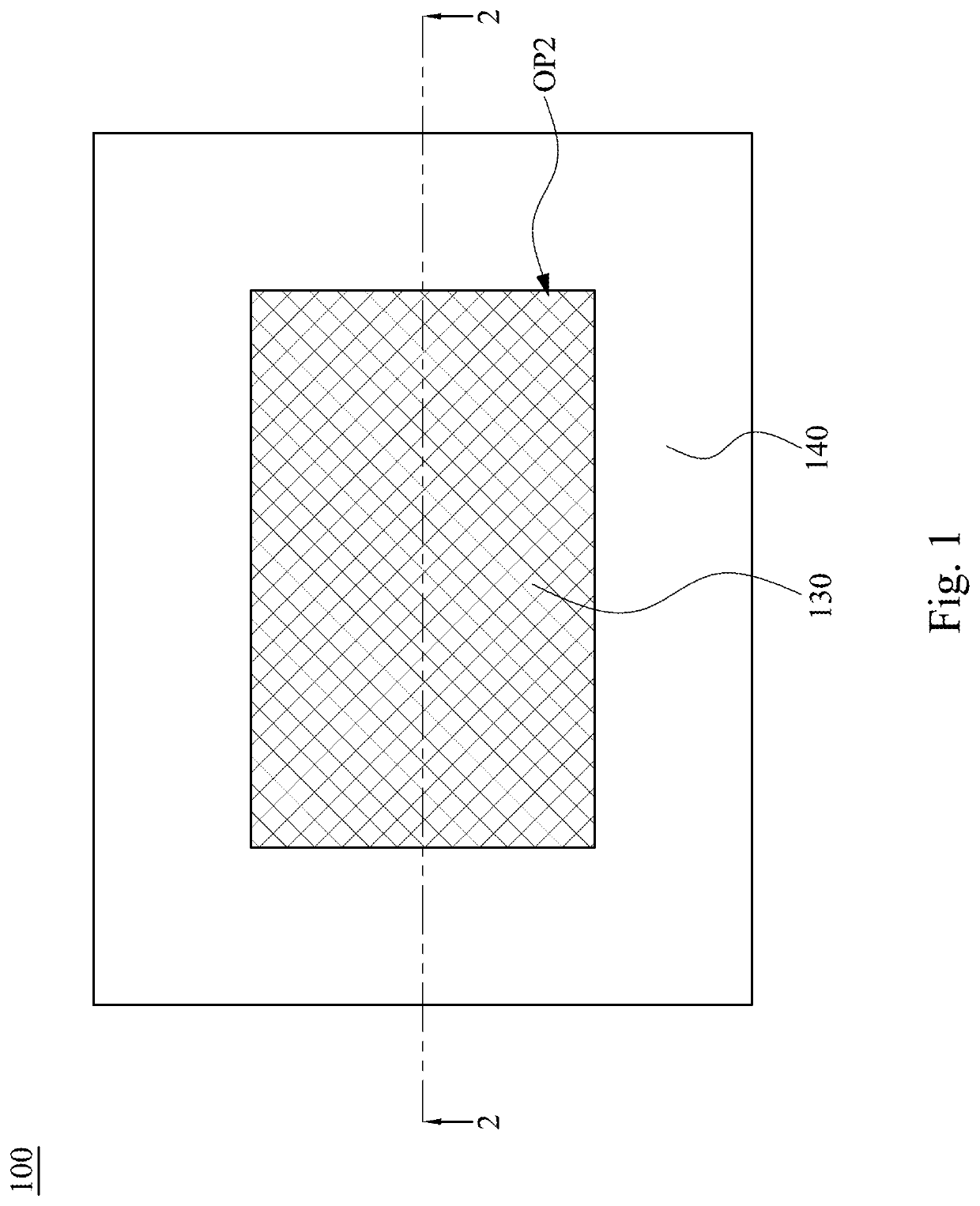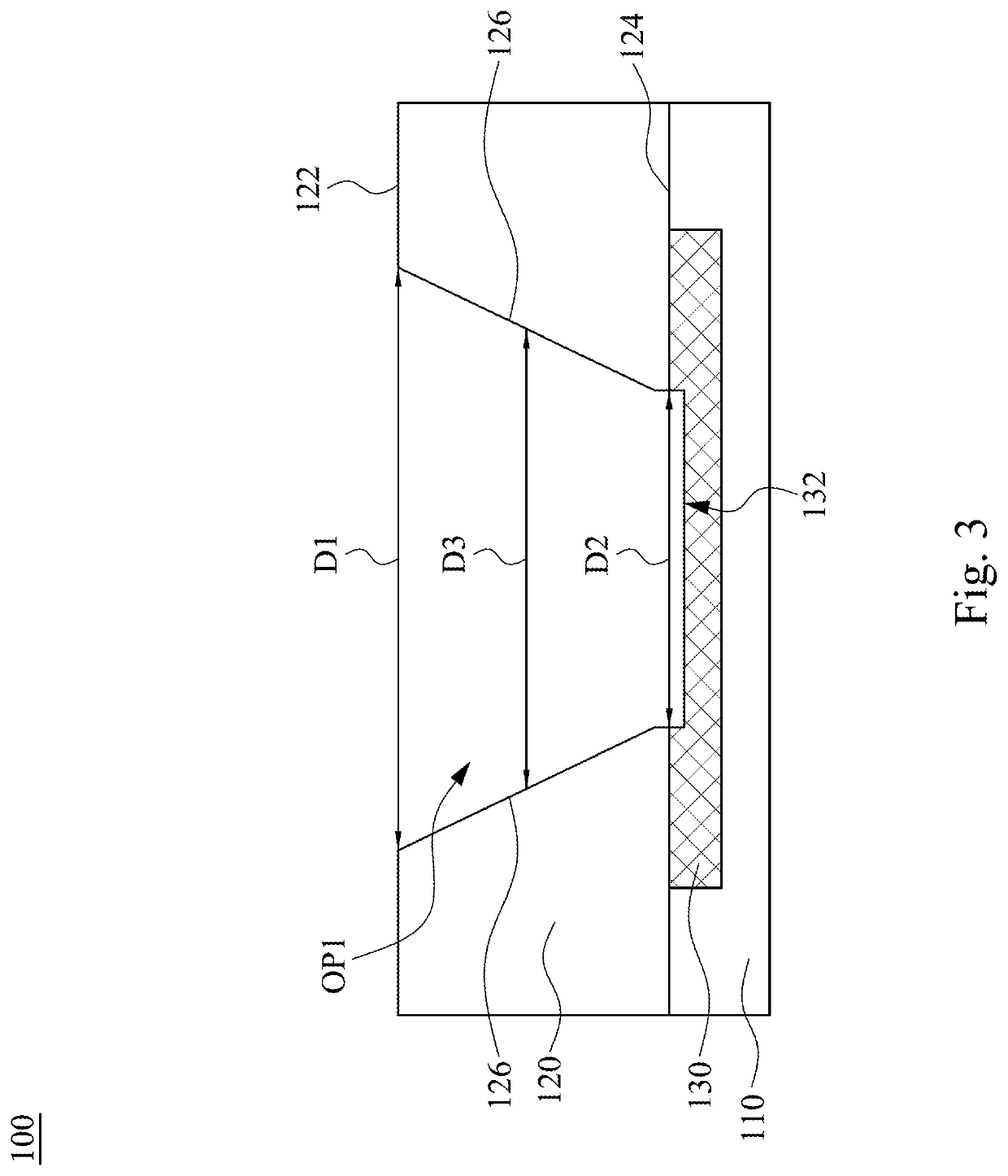Conductive via structure
a conductive via and structure technology, applied in the direction of semiconductor devices, electrical devices, semiconductor/solid-state device details, etc., can solve the problems of aluminum deposition efficiency decline, poor aluminum deposition efficiency, and poor electrical connection quality, so as to improve the electrical connection quality of the conductive via structure
- Summary
- Abstract
- Description
- Claims
- Application Information
AI Technical Summary
Benefits of technology
Problems solved by technology
Method used
Image
Examples
Embodiment Construction
[0026]Reference will now be made in detail to the present embodiments of the invention, examples of which are illustrated in the accompanying drawings. Wherever possible, the same reference numbers are used in the drawings and the description to refer to the same or like parts.
[0027]FIG. 1 is a top view of a conductive via structure 100 according to some embodiments of the present disclosure. FIG. 2 is a cross-sectional view of the conductive via structure 100 taken along line 2-2 shown in FIG. 1. Reference is made to FIGS. 1 and 2. The conductive via structure 100 includes a first dielectric layer 110, a second dielectric layer 120, a conductive pad 130, and a redistribution layer 140. In some embodiments, a substrate, such as a silicon substrate, a semiconductor substrate, or the like, may be located below the first dielectric layer 110 to support and electrically connect to the conductive pad 130. The conductive pad 130 is in the first dielectric layer 110. The second dielectric ...
PUM
| Property | Measurement | Unit |
|---|---|---|
| width | aaaaa | aaaaa |
| width | aaaaa | aaaaa |
| width | aaaaa | aaaaa |
Abstract
Description
Claims
Application Information
 Login to View More
Login to View More - R&D
- Intellectual Property
- Life Sciences
- Materials
- Tech Scout
- Unparalleled Data Quality
- Higher Quality Content
- 60% Fewer Hallucinations
Browse by: Latest US Patents, China's latest patents, Technical Efficacy Thesaurus, Application Domain, Technology Topic, Popular Technical Reports.
© 2025 PatSnap. All rights reserved.Legal|Privacy policy|Modern Slavery Act Transparency Statement|Sitemap|About US| Contact US: help@patsnap.com



